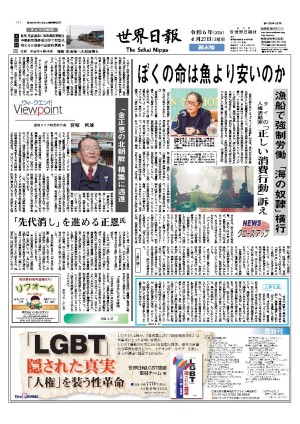The headache in Pakistan 頭痛の種のパキスタン
The headache in Pakistan
Pakistan is a headache for the West, with its 185 million Muslims suffering a fragile combination of its military, the only viable national institution (civil Punjabi elite descended from British India) and a growing threat of Islamic terrorists. That balance may be coming unhinged, and then a bigger headache. Chaos in Pakistan would threaten further mischief in the 1.3-billion ummah, the Islamic world stretching from Zamboanga in the southern Philippines to Dakar in West Africa.
A secret trial of 10 would-be assassins, originally charged with attempting to murder the 15-year-old Malala Yousafzai, a teenage advocate of female education, has collapsed. Only two of the assassins have been convicted. They climbed aboard a student bus, asked her to identify herself, and shot her through the head. She survived, to become a Nobel Laureate, a symbol of resistance to the Muslim fanatics. She nevertheless dares not return to her home in Pakistan.
Conviction in April of the original suspects, with a penalty of life imprisonment, usually amounting to 25 years in the Pakistani system, has been annulled. Salim Khan, a senior police official, tells Reuters that eight suspects were freed because of “lack of proof.” Such trials are held in deep secrecy in fear of retribution from “militants.”
Hardly a day passes without a terrorist attack, either against the civilian government or by Sunni or Shia terrorists getting even with neighbors of the “wrong” sect. In western Baluchistan province, where a violent civil war has gone on for decades, dozens of bus passengers from the wrong side of the religious divide have been killed over the last few weeks. Christians have been condemned to death for violating Pakistan’s blasphemy laws. Late last year 145 students and teachers were slain by Taliban terrorists in an attack on a school supported by the military.
Pakistan’s deficit economy survives with major infusions from the United States, Saudi Arabia and China. The United States began providing economic assistance along with military aid in 1947, shortly after the creation of the country, and $67 billion was lavished on Pakistan between 1951 and 2011. After abandoning Pakistan in the ’90s in opposition to its successful development of nuclear weapons, Washington authorized another $7.5 billion, though it has not always redeemed the annual $1.5 billion commitment.
This swing and sway of Washington’s policies, and virulent radical Muslim propaganda, has produced bitter anti-American hostility. And the U.S. has had a hard time facing up to terrorism, sometimes an extension and outgrowth of the Pakistani military and intelligence in its constant low-level support of pro-Pakistan and independence guerrillas in Kashmir, the Himalayan state contested with India. A massacre in Bombay in 2008 took the lives of 164 civilians and nine terrorists, including six Americans.
Pressure from Washington in that year assisted in the ouster of Pervez Musharraf and his “civilianized” military government. The current weak, Saudi-supported administration, imitating the rule of law of the much-vilified British India, is constantly under threat of another military takeover. For more than half of Pakistan’s history the military has ruled the land. The hidden drama of the Malala trial suggests a breakdown under the increasing terrorist threat, and that may bring back army rule, or something worse.
The implications for the United States, India (home of more Muslims than Pakistan), Bangladesh and the Pakistan diaspora – a half-million Pakistanis live in the United States – are great. Given the sorry record of the Obama administration in the Middle East, the prospect of a Pakistan implosion is frightening.
June 10, 2015
頭痛の種のパキスタン
パキスタンは、西欧諸国にとって頭痛の種である。唯一機能している国家機関といえば(英領インド時代にさかのぼるパンジャブの民間人のエリート集団である)軍隊であるが、それは、脆弱(ぜいじゃく)な混成部隊だし、またイスラムのテロリストの脅威の高まりを受けて、同国は1億8500万人のイスラム教徒を抱えながら、苦悩している。パキスタンにおける混乱は、フィリピン南部のザンボアンガから西アフリカのダカールにまで広がるイスラム圏、13億人のウンマ(イスラム共同体)における騒動をさらに引き起こすことになろうと、想定される。
ティーンーエージャーの女性教育の提唱者、15歳のマララ・ユスフザイの殺人未遂事件では、当初告訴されていた10人の暗殺未遂犯の裁判は秘密裏に行われ、裁判の体を成さなかった。暗殺者のうち2人しか有罪判決を受けなかったのである。彼らはスクールバスに乗り込んで、彼女に名乗るよう言い、そして頭を撃ち、弾は頭を貫通したのであった。彼女は一命を取り留め、ノーベル賞を受賞し、狂信的イスラム教徒への抵抗の象徴になった。だが、彼女はパキスタンの家に帰ろうとしてはいない。
4月の当初の容疑者の判決は、パキスタンの制度では普通、25年の懲役刑というところだが、終身刑になった。しかし、その判決は無効とされた。警察の高官サリム・カーン氏はロイター通信に、8人の容疑者は「証拠不十分」で釈放されたと伝えている。そのような裁判は、「民兵」の報復を恐れて、全く秘密裏に行われるのである。
文民政府に向けたものや、「(自分たちと)違った」宗派を信じる隣人たちに仕返しをするスンニ派やシーア派のテロリストによるものを含め、一日としてテロ事件が発生しない日はほとんどない。激しい内戦が数十年間続いたバルチスタン州西部では、ここ数週間に対立する宗派のバスの乗客数十人が殺害された。キリスト教徒らは、パキスタンのイスラム教の神を冒涜した罪で死刑の判決を受けた。
昨年遅く、145人の生徒と教師が、タリバンのテロリストによって、軍の支持を受けている学校の襲撃中に殺害された。
パキスタンの赤字経済は、主に、米国、サウジアラビア、そして、中国からの資金注入によって生き残っている。米国は、同国建国後間もなくの1947年に、軍事援助と共に、経済援助の供与を開始した。そして、1951年から2011年の間にパキスタンに670億㌦が気前良く支払われた。ワシントンは、パキスタンの核兵器開発の成功に反対して、90年代に同国を見捨てたのだが、その後も、ワシントンはさらに75億㌦の供与を認めた。もっとも、ワシントンは年間15億㌦の約束をいつも履行しているわけではないが。
このように、ワシントンの政策が揺れ動いたり、敵意に満ちたイスラム過激派のプロパガンダが功を奏したりしたため、激しい反米感情が醸成された。そして、米国は、テロや、時には、パキスタン軍と諜報(ちょうほう)機関から生まれて大きくなり、増殖した勢力に立ち向かわなければならない困難な時を過ごしてきた。軍と諜報機関は、インドと紛争中のヒマラヤの州、カシミールのパキスタン寄りの分離独立派ゲリラのサポートを、常に低レベルで続けてきている。2008年のボンベイの大量殺戮(さつりく)では、6人の米国人を含め、164人の民間人と9人のテロリストの命が奪われた。
その年のワシントンからの圧力もあずかって、ペルベズ・ムシャラフ(元大統領)と彼の「文民統制的」軍事政府は追放された。現在の脆弱で、英領インド時代の評判の悪かった法の支配をまねたサウジアラビアに支えられた政権は、常に、新たな軍の権力掌握の脅威にさらされている。実に、パキスタンの歴史の半分以上が、軍による国家支配で占められているのだ。マララ裁判の隠蔽されたドラマは、増大するテロの脅威の下での国家の機能停止を示唆しており、それは、また、軍の支配の復活、あるいは、何か、それ以上に悪いものをもたらすかもしれないことを暗示している。
米国にとって、インド(パキスタンより多くのイスラム教徒を抱えている)、バングラデシュ、そして、海外移住パキスタン人――50万人のパキスタン人が米国に住んでいる――の状況は、重大な問題をはらんでいる。中東におけるオバマ政権の拙い実績を考えると、パキスタンの内部崩壊の展望が恐ろしく迫ってくる。
(6月10日付)





